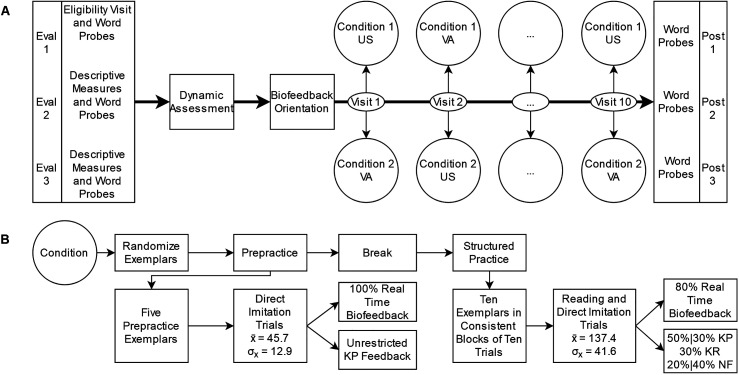Figure 2.
Study design and treatment methodology. Panel A shows the rapidly alternating single-case randomized block design and a hypothetical condition order for illustrative purposes. For each participant, the order of biofeedback presentation was randomized to the two treatment conditions within each of the 10 visits (i.e., the statistical blocking unit). Research Question 1 concerned the between-series, within-subject comparison of performance on trained words to measure if some subjects demonstrated greater motor acquisition to one biofeedback condition or the other. Research Question 2 compared performance on untrained words during the three pretreatment evaluation probes to the three posttreatment probes to measure generalization following the combined treatment program. Panel B shows the structure of the treatment program, along with group-level averages of achieved dosage. US = ultrasound; VA = visual-acoustic; KP = knowledge of performance; KR = knowledge of results; NF = No feedback.

